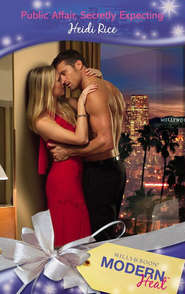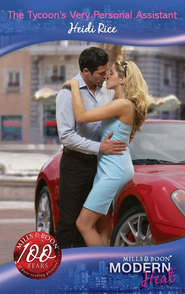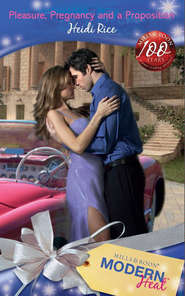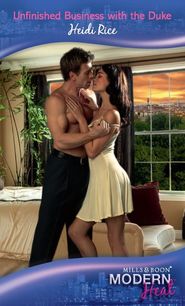По всем вопросам обращайтесь на: info@litportal.ru
(©) 2003-2025.
✖
Movie Bliss: A Hopeless Romantic Seeks Movies to Love
Автор
Год написания книги
2019
Настройки чтения
Размер шрифта
Высота строк
Поля
Bert Lahr as the Cowardly Lion
Jack Haley as the Tin Man
Margaret Hamilton as the Wicked Witch of the West
Surely the ultimate fantasy quest movie, the original Judy Garland version of L. Frank Baum’s classic The Wizard of Oz does so, so many wonderful things—but here are just a few of them.
For starters, there are the catchy hum-along songs. Tunes so memorable that as soon as you say the titles, you’ll be humming them in your head—like ‘We’re Off to See the Wizard’ or ‘If I Only Had a Brain’ or ‘Follow the Yellow Brick Road’. See what I mean? Works every time…
But let’s not forget the best song of all: Judy Garland’s sends-shivers-down-your-spine version of ‘Somewhere Over the Rainbow,’ which, amazingly, nearly got cut from the finished film because Louis B. Mayer thought it slowed the pace. (Louis, you philistine!) Tons of people have covered this song since (just try sticking it into YouTube and you’ll get the picture), but no one sings it with more heart and soul than Judy, her full, rich, heartbreaking voice all the more poignant when you consider this was her finest hour, when she was a beautiful, doe-eyed teenager full of promise, and all her troubled times were mostly still ahead of her.
Then there’s the superb casting: not just Judy at the peak of her powers, but also all those character actors—from Margaret Hamilton’s Wicked Witch of the West to Bert Lahr’s hilarious Cowardly Lion—who each took their one big chance to shine and turned in career-defining performances.
And don’t forget the glorious Technicolor photography coupled with some eye-popping set design—they make the Yellow Brick Road gleam like a golden halo, the field of deadly poppies glow a vibrant red and the Emerald City sparkle in an array of rich verdant greens. Plus there’s the gorgeous process art, which is so lush and lovely it’s still a feast for the eye—and makes today’s CGI-enabled movie magic look decidedly ordinary by comparison.
And let’s not forget the dreamily good script, which took L. Frank Baum’s original story about a young girl’s quest to get home and moulded it into something that will make you laugh, cry, sing, dance and gasp with amazement. And it boasts a slew of quotable lines that have become an essential part of pop culture: ‘Pay no attention to the man behind the curtain!’ ‘I’ve a feeling we’re not in Kansas anymore’ or ‘I’m melting, I’m melting’, to name but a few.
And last, but by no means least, there’s the fact that this movie can still make you feel like a kid on Christmas morning—no matter how old or jaded you are, or even if it’s the middle of July. It can mesmerise and excite, and fill you with the complete conviction that magical things really do happen and there actually is ‘no place like home’.
The Wizard of Oz is Hollywood’s golden era at its most golden, guaranteed to make your troubles melt like lemon drops away above the chimney tops…. Oh, darn it, I’m singing again!
It’s a Wonderful Life (1946): How a Banker Steals My Heart Every Christmas
Directed by Frank Capra
Starring:
James Stewart as George Bailey
Donna Reed as Mary Hatch
Lionel Barrymore as Henry F. Potter
Henry Travers as Clarence
Ward Bond as Bert
Whenever ’tis the season to be jolly, I can never resist the opportunity to pull one of my all-time festive favourites out of the Santa sack and spread some good cheer into the winter chill.
I’ll grant you, though, It’s a Wonderful Life isn’t exactly a chick-flick in the conventional sense—and James Stewart’s suicidal savings and loan man is hardly anyone’s idea of an alpha male. Consequently, Frank Capra’s Yuletide classic may not be everyone’s idea of a film to make you drool over the festive season. But luckily, us romance junkies are about so much more than hunky guys and romantic fantasies, right? We’re so not that shallow. And anyway, I’d argue that this festive favourite does have a hunky guy in it—maybe not hunky in the Hugh Jackman–nekkid sense, but certainly hunky in the huggable sense. James Stewart, after all, is so the template for the grounded and gorgeous heroes of Harlequin’s heart-warming romance lines. And with those stories in mind, I’d also say that It’s a Wonderful Life may be a romantic fantasy but with a it-could-happen-to-you integrity, because this film is about the making and maintaining of a strong, resilient, wonderful marriage. It’s about family and friends. It’s about all those mundane everyday things that you take for granted but which give your life meaning. And it’s about what happens after the Happy Ever After…and how you make it last forever.
So, in other words, if this film doesn’t leave you with a warm glow and a great big ahh wrapped around your heart, then you’d have to be a close personal friend of Ebenezer Scrooge.
All right, already, now I’m going to give you a quick rundown of the plot—for anyone who has somehow managed to miss it on TV every Christmas for the past fifty-something years!
James Stewart is George Bailey, the owner and manager of a small-town savings and loan that is about to go tits up. He wanted to see the world as a kid, had big plans to get out of Bedford Falls and make a name for himself. But George is a guy who’s always done the right thing for his friends and family. So when he fell in love with the girl next door, he married her and had four kids. When his father died, he took over the family business even though he didn’t really want to…. And when his uncle Billy mislaid thousands of dollars of the bank’s money, it’s George who’s set to take the fall.
And in amongst all the good things he did, in amongst the happy times and the tough ones, George lost sight of his dreams. And so, when everything starts to collapse around him one Christmas Eve, George decides to take his own life. So far, so not so warm and fuzzy, I’m sure you’re thinking…but bear with me here. For as George is about to take a header into the town’s ice-filled river, up pops Clarence, a trainee angel to jump in first (yes, George is a bit miffed that he only warranted a trainee one, too). George, being George, saves Clarence before thinking about himself—giving Clarence the chance to get to work.
So what does Clarence do? He comes up with the cunning idea of giving George a glimpse of what good ole Bedford Falls would have been like if he had never lived. Yup, you’ve guessed it, Clarence has basically ripped off his cunning plan from Dickens’s A Christmas Carol and given it a clever twentieth-century twist.
So George discovers that the brother he saved from drowning as a kid then died and never got the chance to grow up and become a war hero—and all the men he, in turn, saved also died. George finds his beloved wife, Mary, is a lonely spinster and doesn’t even recognise him. He runs home to find the derelict house they bought and rehabbed together is still a broken ruin. His kids don’t exist, and miserable old man Potter—the big, greedy, unethical banker who has always hated George and his savings and loan—has taken over the quaint, sweet little town and turned it into a garish, soulless, neon-lit strip mall. Yes, times are terrible in Bedford Falls without George. Everything he knows and loves is gone….
So then all Clarence has to do is ask George if he really wishes he’d never lived. And the answer is a great big resounding no! Not just from George, but from everyone in the audience. And as George runs down the snowy Main Street and shouts merry Christmas to all those people and places he knows and loves (and who now know him, too), he’s got his mojo back (so to speak) and he, at last, realises that small dreams can actually be better than big dreams, especially if you know how to appreciate them.
So what’s the moral of the story?
Maybe it’s that we should all learn to cherish the little things? Maybe it’s that every life has value (even nasty old Mr Potter’s, who hasn’t got a single redeeming feature)? Maybe it’s simply that when the chips are down, you should look at what you’ve got, not what you haven’t? All good advice and all very heart-warming (especially if you’ve just been down a heaving Oxford Street in London’s West End trying to do all that last-minute Christmas shopping you should have done months ago).
But what I love about this film, what never fails to send that delicious quiver of emotion down my spine, is the way it portrays George and Mary’s marriage, because at the end of the day, that relationship is the bedrock of George’s life. Mary’s a sweet, pretty, no-nonsense, and utterly competent and patient wife and mother. She adores George, but she also knows him, inside and out—his weaknesses as well as his strengths.
And that makes theirs the perfect partnership.
That doesn’t mean the kids don’t get on their nerves, or that they don’t get on each other’s nerves, but it does mean that they love each other, and that they’re willing to go that extra mile to make things work. George isn’t the only one who’s made sacrifices, he’s not the only one who’s had to work and struggle and keep things together when it would have been easier to let them slide. Of course, this being George’s story, we don’t see a lot of Mary’s struggles, but they’re there, especially when George loses it with her and the kids and then slams out of the family home—on his way to a date with the icy river and Clarence.
And Mary’s the one who gets them their Happy Ever After in the end, because she tells all their friends and family of the trouble George is in. George being a bloke, of course, doesn’t think of that one (must be something to do with that old Y chromosome ‘asking for directions’ thingy). And so the whole town chips in to help with a few dollars here, a couple more dollars there—and in the end it really isn’t about the money, it’s about the love behind it. Cue another great big ahh.
So, is George and Mary’s marriage a romantic fantasy?
You betcha, but isn’t it one we can all aspire to? And isn’t that the same quality you love to unwrap in your favourite series romance? For me, the fast cars, the luxury homes, the designer wardrobe, even the glistening pecs, the awesome six-pack and the sex-god abilities between the sheets are just the sparkly tissue paper. It’s what’s underneath that counts—the good, strong, steady, dependable heart that’s beating just for you. That’s the real present, the gift you want that will keep on giving….
All right, I’m getting a little carried away now, but you get my drift. Especially if you watch this film on Christmas Eve in front of your bauble-laden tree and a roaring fire with either friends, family or the love of your life—or even just your favourite series romance—snuggled by your side.
On the Waterfront (1954): Brando in His Prime Does Bad Boys Proud
Directed by Elia Kazan
Starring:
Marlon Brando as Terry Malloy
Eva Marie Saint as Edie Doyle
Karl Malden as Father Barry
Lee J. Cobb as Johnny Friendly
Rod Steiger as Charley Malloy
A now-little-seen black-and-white social drama, Elia Kazan and Budd Schulberg’s tale of labour relations on the New Jersey docks circa 1954 is not a romance, but it has at its centre a love story that is so real and so beautifully evoked in only a few scenes it‚s bound to tear at your heart. Plus it’s performed by surely the greatest film actor of all time in his prime (long before he became the size of a small semi-detached house) and an actress who is not only luminously lovely but also sadly underrated IMHO. The chemistry between them in this movie is raw and provocative and poignant and so powerful that their love story is as fresh and real now as it was over half a century ago. And those are just a few reasons why it is my favourite film of all time.
Now, as it happens, it’s the love story in this movie that resonates so beautifully for me, so I’m going to dwell on that and not the rest of the movie—although that’s pretty spectacular, too. Anyone ever heard of Brando’s ‘I coulda been a contenda’ speech? That comes from this multi-Oscar-winner.
So let’s do a quick plot recap. The setting is the New Jersey docks in the 1950s, where the longshoremen’s union is controlled by corrupt thug Johnny Friendly and his right-hand man, Charlie the Gent. Charlie’s younger brother Terry (a thirty-something has-been ex-boxer) has been inadvertently involved in the killing of Joey, one of the longshoremen who was threatening to ‘squeal’ to the crime commission. Terry feels bad about it, but that’s life on the docks. He’s not about to rat out his brother. Until he meets Joey’s distraught sister Edie….
The drama that follows is about Terry’s battle with his conscience, and the harsh life of America’s dockworkers…. It’s social realism through and through, with a cast full of brilliant method actors, a wonderfully understated script by Budd Schulberg, and haunting black-and-white photography. But it’s the developing relationship between Edie and Terry that drives the story and is the heart and soul of the whole movie.
Take their first meeting, when the rough and inarticulate Terry tugs on Edie’s glove and sits on a kids’ swing while chatting to her with offhand bravado about his miserable childhood—Edie responds with quiet class and what Terry sees as a kooky naiveté. But Edie’s attitude isn’t really naiveté at all— it’s the simple belief that if people are loved they can rise above their circumstances….











